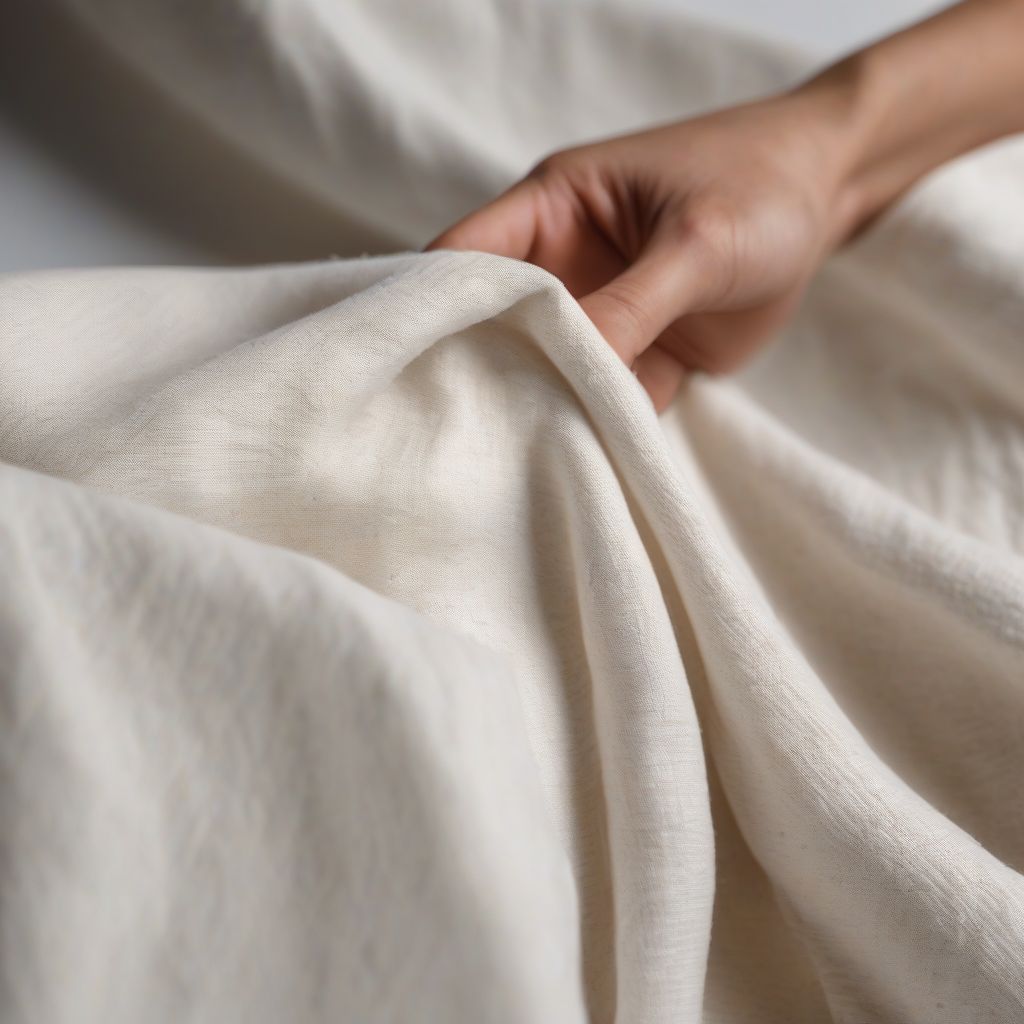Imagine slipping into a stylish outfit that not only makes you look good but also aligns with your values. That’s the power of ethical fashion. But with so many fabrics out there, how can you be sure you’re making eco-friendly choices?
As a nutritionist and meal prep coach, I understand the importance of making conscious decisions about what we consume, whether it’s food or fashion. Just like choosing nourishing ingredients for our bodies, we can opt for sustainable fabrics that are gentle on the planet.
This comprehensive guide will explore the best sustainable fabrics for ethical fashion, empowering you to make informed choices that reflect your commitment to both style and sustainability.
Understanding Sustainable Fabrics: What Makes a Fabric Eco-Friendly?
Before we dive into the specifics, let’s clarify what makes a fabric sustainable. It’s all about minimizing the negative impact on the environment throughout its lifecycle, from raw material extraction to production, use, and disposal. Here are some key factors to consider:
- Biodegradability: Can the fabric decompose naturally at the end of its life, returning to the earth without leaving harmful residues?
- Resource Consumption: Does the production process require excessive water, energy, or land use?
- Chemical Use: Are harmful pesticides, fertilizers, or dyes used in cultivation or manufacturing?
- Fair Labor Practices: Are workers treated ethically and paid fair wages throughout the supply chain?
By choosing fabrics that meet these criteria, we can minimize our ecological footprint and support a more ethical fashion industry.
Natural Wonders: Exploring the Best Sustainable Fabrics
Nature provides us with an array of renewable and biodegradable materials that can be transformed into beautiful and durable fabrics. Let’s delve into some of the top contenders:
1. Organic Cotton: The Breathable Classic
 Organic Cotton Fabric
Organic Cotton Fabric
Cotton, a beloved staple, gets a sustainable upgrade with its organic counterpart. Organic cotton is grown without harmful pesticides and fertilizers, protecting both the environment and the health of farmers. It’s soft, breathable, and perfect for everything from t-shirts to dresses.
Expert Insight: “Conventional cotton farming is a major polluter, using vast amounts of water and chemicals. Choosing organic cotton is a simple yet impactful step towards a more sustainable wardrobe.” – Emma Smith, Sustainable Fashion Designer
2. Linen: Effortlessly Chic and Durable
Linen, derived from the flax plant, is a timeless fabric known for its effortless elegance and durability. It’s naturally breathable and gets softer with every wash. Plus, linen production requires less water and pesticides compared to conventional cotton.
Fun Fact: Did you know that linen is one of the oldest textiles in the world, dating back thousands of years?
3. Hemp: The Versatile All-Rounder
Hemp, a fast-growing and resilient plant, is a true sustainability champion. It requires minimal water and pesticides to thrive and produces strong, durable fibers that can be woven into a variety of fabrics. From casual wear to sturdy bags, hemp offers versatility and eco-friendliness in one package.
Key Benefit: Hemp fabric is naturally antimicrobial, making it resistant to mold and mildew.
4. Tencel (Lyocell): The Silky Smooth Innovator
Tencel, also known as lyocell, is a biodegradable fabric made from sustainably harvested wood pulp. It’s known for its silky smooth texture, excellent drape, and moisture-wicking properties. Plus, the closed-loop production process used to make Tencel minimizes waste and environmental impact.
Did You Know? Tencel is often blended with other fabrics to enhance their sustainability and performance.
5. Peace Silk: The Cruelty-Free Alternative
For those who adore the luxurious feel of silk but seek a cruelty-free alternative, peace silk is a compassionate choice. It’s produced without harming silkworms, allowing them to live out their full lifecycle.
Ethical Consideration: By choosing peace silk, you’re supporting a more humane and sustainable approach to silk production.
Innovative Alternatives: Recycled and Upcycled Fabrics
In addition to natural fibers, the world of sustainable fashion is embracing innovative solutions like recycled and upcycled materials.
6. Recycled Polyester: Turning Plastic into Fashion
Recycled polyester, made from post-consumer plastic bottles and other discarded plastics, offers a way to reduce plastic waste and give it a new life. It’s a durable and versatile fabric used in activewear, swimwear, and more.
Environmental Impact: Using recycled polyester helps to conserve resources and reduce our dependence on virgin materials.
7. Upcycled Materials: Giving Discarded Items a Second Chance
Upcycling involves transforming pre-owned materials or waste products into new, high-quality garments. From vintage clothing reconstructions to accessories crafted from discarded fabrics, upcycling promotes creativity and minimizes textile waste.
Sustainable Style Tip: Look for brands and designers who prioritize upcycling and offer unique, one-of-a-kind pieces.
Choosing Sustainable Fabrics: Tips for Conscious Consumers
Ready to embrace ethical fashion in your wardrobe? Here are some practical tips:
- Read Labels Carefully: Look for certifications like GOTS (Global Organic Textile Standard) and OEKO-TEX Standard 100, which ensure sustainable and ethical practices.
- Support Sustainable Brands: Choose brands that prioritize transparency, fair labor practices, and eco-friendly materials.
- Shop Secondhand: Give pre-loved clothing a new home and reduce textile waste by exploring thrift stores, consignment shops, and online platforms.
- Care for Your Clothes: Proper care extends the lifespan of your garments. Wash clothes in cold water, air dry whenever possible, and repair minor damages instead of discarding them.
Conclusion: Weaving a More Sustainable Future with Ethical Fashion
By choosing sustainable fabrics and supporting ethical brands, we can make a positive impact on the planet and the people who make our clothes. Remember, every conscious choice adds up to create a more responsible and stylish fashion industry. As you continue your sustainable fashion journey, keep exploring, asking questions, and embracing the power of mindful consumption. Together, we can weave a more sustainable future, one stylish garment at a time.
What are your favorite sustainable fabrics? Share your thoughts and sustainable fashion finds in the comments below!
[amazon bestseller=”sustainable fashion”]
